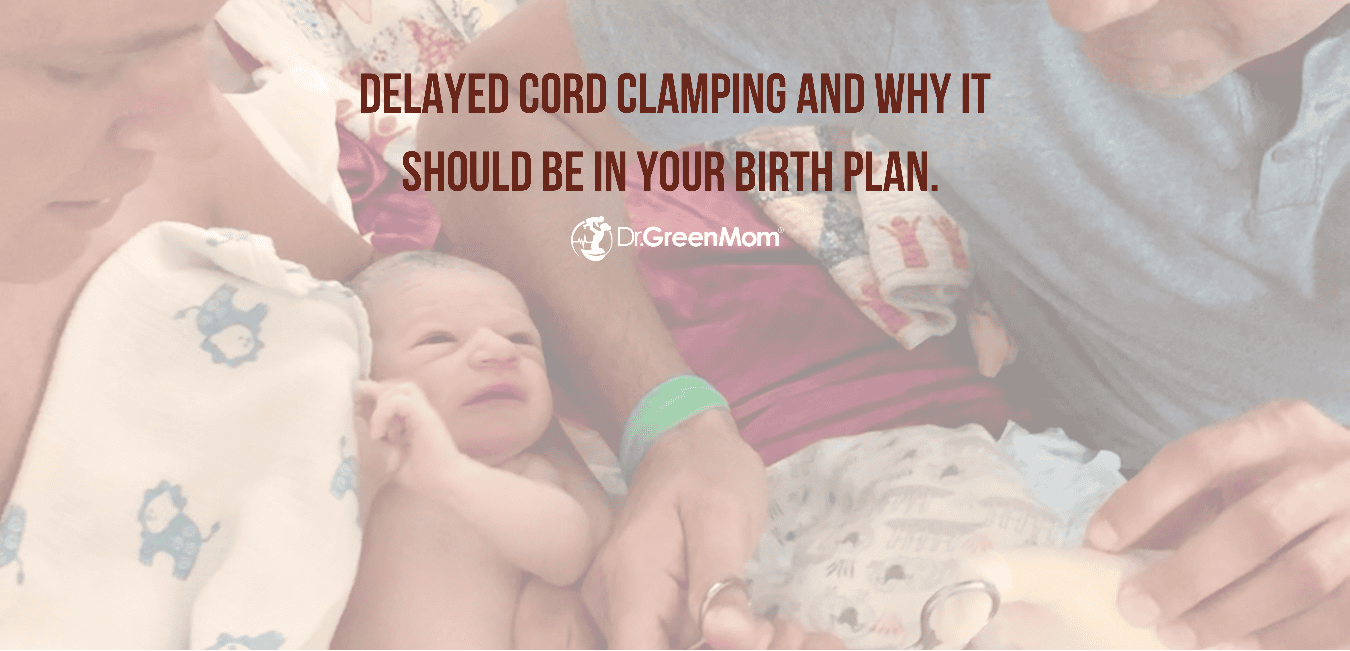Placenta encapsulation is a postpartum practice that is believed to offer various benefits for the mother, such as improved mood, increased energy, enhanced postpartum recovery, and increased breast milk production. In this article, you’ll read about the specifics of placenta encapsulation, the potential benefits and risks, and the different methods of encapsulation as well as some practical guidance for those considering it. It is important to take into consideration this information before deciding whether placenta encapsulation is right for you.
What Is Placenta Encapsulation?
Placenta encapsulation involves dehydrating and grinding the placenta into a fine powder, which is then placed into capsules for consumption. This process is usually done by a doula, midwife, or placenta encapsulation service, and allows new mothers to ingest their placenta over a period of time, often in the weeks following childbirth.
The placenta is an organ that develops during pregnancy and is responsible for delivering oxygen and nutrients to and removing waste products from the growing baby. After birth, the placenta is usually discarded, but placenta encapsulation offers an alternative that can potentially benefit the mother during her postpartum period.
The Historical & Cultural Context of Placenta Encapsulation
Placenta consumption, known as placentophagy, is not a new concept. In the animal kingdom, many mammals instinctively consume their placenta after birth (1). This behavior is believed to help animals replenish nutrients lost during childbirth and may offer protection from predators by eliminating the scent of birth (1).
Similarly, various human cultures throughout history have practiced placentophagy. In some societies, the placenta is revered for its properties and consumed in raw or cooked forms to aid the mother’s recovery postpartum, as well as for other uses like sexual dysfunction (1).
It is important to note that not all traditional cultures practiced placentophagy (2). In fact, many cultures had specific customs for handling placentas that did not involve consumption. Some traditions required placentas to be buried, burned or otherwise disposed of, or dried and kept as a spiritually significant object or memorabilia. In other instances, placentas were considered unclean or polluted (2), reflecting the potential risks associated with placentophagy, which will be discussed later in this article.
Today, placenta consumption is quite popular with data showing that about 30% of women who give birth today in the United States consume the placenta. Placenta encapsulation offers a modern adaptation to the traditional practice of placentophagy, allowing for the placenta to be consumed in a more palatable, safe, and convenient form (3).
What Are the Potential Benefits of Placenta Encapsulation?
The believed benefits of placenta encapsulation are mostly anecdotal or extrapolated from animal studies, though some smaller studies are beginning to emerge to help us scientifically confirm and quantify the potential benefits of this practice. The potential benefits are listed below.
Personal note: In women’s health there is often a lack of research, and placentophagy is a good example of this. In these cases traditional practices, clinical and personal experience become more important sources of information. For what it’s worth, it’s been the experience of many women in my personal and professional circle that consuming encapsulated placenta is beneficial to their postpartum health and recovery.
1. Improved Mood & Reduced Risk of Postpartum Depression
One of the most commonly cited benefits of placenta encapsulation is its potential to improve mood and reduce the risk of postpartum depression (1). The idea is that consuming the placenta can help balance hormone levels after childbirth, which may help mitigate the “baby blues” and postpartum depression and/or anxiety. While anecdotal accounts are plentiful, the scientific evidence supporting this is still limited. Research has detected hormones like progesterone and estradiol in placenta capsules (4); it remains unclear whether these levels are sufficient to have a significant impact on postpartum mood (4).
Nutrients in the placenta, including iron, may support a mothers general nutrient intake. Nutrient deficiencies during the postnatal period can be related to postpartum fatigue and postnatal depletion syndrome. A small study from 2016 analyzed the mineral content of placenta capsules and found that they contained a modest amount of iron, comparable to the amount found in three ounces of chicken liver or sardines (5).
To learn more about postpartum mood disorders, read these articles: Identifying and Managing Postpartum Depression, Understanding and Managing Postpartum Anxiety, and What Is Postnatal Depletion Syndrome?
2. Increased Breast Milk Production
Placenta encapsulation is also believed by some to boost breast milk production (6). The hormones present in the placenta, such as prolactin (4), which plays a role in milk production, could potentially contribute to an increase in milk supply. The nutrients mentioned above may play a role in improving milk quality and composition.
3. Faster Postpartum Recovery
Some women report that placenta encapsulation aids in faster postpartum recovery, including quicker uterine contraction and reduced postpartum bleeding. The placenta is rich in prostaglandins (4), which are involved in uterine contraction (5) and may help the uterus return to its pre-pregnancy state more quickly. The above-mentioned nutrients likely play a role in aiding postpartum recovery as well.
Can I Practice Both Placenta Encapsulation and Delayed Cord Clamping?
Placenta encapsulation and delayed cord clamping are two practices that some parents choose to incorporate into their birth plan to optimize postpartum recovery for both mother and baby. Delayed cord clamping allows for more blood, nutrients, and stem cells to be transferred from the placenta to the baby before the cord is severed (7). This practice can enhance the baby’s iron stores and support overall health (7). Once the cord has been clamped and cut, the placenta can still be prepared for encapsulation (8). You do not need to choose one or the other.
To learn more about delayed cord clamping, read: Delayed Umbilical Cord Clamping: The Benefits & Risks
What Are the Potential Risks and Concerns of Placenta Encapsulation?
It is important to consider both the benefits and the risks of placenta encapsulation. While placenta encapsulation is mostly considered to be safe, there are some risks and concerns to be aware of.
1. Infection from Encapsulated Placenta Consumption
One of the primary concerns with placenta encapsulation is the risk of infection (1). If not properly stored and prepared the placenta can harbor bacteria, viruses, and other pathogens that could be harmful if ingested. Proper handling, processing, and storage can reduce this risk, but it cannot be entirely eliminated.
It is noteworthy that the Center for Disease Control and Prevention (CDC) has reported a case of group b strep infection in a newborn linked to the mother’s consumption of contaminated placenta capsules. In this case, the placenta was potentially not heat-treated to a level that would decrease the risk of infection per the CDC’s report. Here is a quote from the report: “No standards exist for processing placenta for consumption. Heating at 130°F (54°C) for 121 minutes is required to reduce Salmonella bacterial counts by 7 log10. In this case, heating for sufficient time at a temperature adequate to decrease GBS bacterial counts might not have been reached. Consumption of contaminated placenta capsules might have elevated maternal GBS intestinal and skin colonization, facilitating transfer to the infant” (9).
However, reports like this are rare and research shows that the consumption of properly prepared encapsulated placenta is relatively low risk (10).
2. Lack of Regulation and Standardization
Placenta encapsulation is not a regulated practice, meaning there is significant variability in how it is performed. Different encapsulation specialists may follow different protocols, and there is no standardized method to ensure safety and efficacy.
3. Potential for Adverse Reactions Due to Placenta Consumption
In addition to the risk of infection mentioned above, some women may experience adverse reactions to placenta encapsulation, such as gastrointestinal issues.
Methods of Placenta Encapsulation
There are several methods of placenta encapsulation: the Traditional Chinese Medicine method, the raw method, and the steamed method.
- Traditional Chinese Medicine Method: This method involves steaming the placenta with herbs, such as ginger and lemon, before dehydrating and encapsulating it. Proponents believe that this process helps balance the warming and cooling energies in the body, according to Chinese medicine principles (11). The steaming process may also reduce the risk of bacterial contamination (8,10).
- Raw Method: In the raw method, the placenta is dehydrated and encapsulated without steaming. Some believe that this method preserves more of the placenta’s nutrients and hormones, offering more potent effects. The limited research we have on this area seems to confirm this, but it also confirms that this method carries the most risk of pathogenic contamination (10).
- Steamed Method: This method is similar to the Traditional Chinese Medicine Method, but without the addition of herbs. Proper preparation at certain temperatures helps to reduce the chances that harmful bacteria are present (10).
Can Similar Benefits Be Obtained by Taking Beef Liver Pills?
For those who are hesitant about placenta encapsulation, beef liver pills are often suggested as an alternative supplement due to their nutrient-rich profile. Beef liver, particularly from grass-fed sources, is packed with vitamins and minerals that are essential for postpartum recovery, such as iron, vitamin B12, and folate. These nutrients can support energy levels, help combat postpartum anemia, and contribute to overall well-being, similar to the benefits claimed by proponents of placenta encapsulation.
The main difference between beef liver pills and encapsulated placenta is that beef liver pills do not contain the specific hormones found in the placenta, such as prolactin and oxytocin, which are believed to play a role in milk production and postpartum mood regulation. Beef liver pills are still a valuable supplement for postpartum recovery, but may not provide the same hormonal support that some women seek from placenta encapsulation.
For those concerned with the risk of contamination that exists with encapsulating placenta, beef liver pills offer a great alternative, as beef liver pills purchased from a trustworthy company will be produced according to stringent standards and 3rd-party tested for purity and safety.
Shop our favorite Grass Fed & Finished Beef Liver Capsules here!
What Does Research Say About Placenta Consumption?
Until recently, most studies on placenta consumption were outdated and of poor quality. While research is still lacking, exciting progress is being made. In 2016, two studies provided new insights into the contents of placenta capsules. The first study found that placenta capsules contain modest amounts of iron and trace amounts of other minerals (3), but not at levels significant enough to impact overall nutrition (5). The second study analyzed the hormonal content of placenta capsules and found that 15 out of 17 hormones tested were present, including progesterone and estradiol (4). The study did not look at potential benefits of the hormones, it simply looked at whether hormones were present.
It is also noteworthy that a small pilot study was conducted as part of a larger randomized trial at the University of Nevada that tested the effects of placenta encapsulation on iron levels and anemia in postpartum women. The study found no significant difference in iron levels between women who took placenta capsules and those who took a placebo (12). This suggests that the modest amount of iron in placenta capsules may not be sufficient to impact postpartum anemia.
Do you want to learn more about anemia? Read these articles: Troubleshooting Anemia Treatment: Reasons Your Bloodwork Isn’t Improving and 9 Micronutrient Deficiencies Associated With Anemia
Can Placenta Encapsulation Be Done If I’m Having A Hospital Birth?
Placenta encapsulation can usually be incorporated into a hospital birth with some advance planning and coordination with your healthcare team. If you’re considering placenta encapsulation, it’s important to inform your doctor or midwife of your intentions before the birth to ensure that hospital protocols are followed. Typically, you will need to sign a release form stating that you wish to take your placenta home.
After delivery, the placenta should be stored in a sterile sealed container and kept refrigerated or on ice until it can be frozen and handed over to a professional encapsulation specialist.
Many hospitals are familiar with this request and have procedures in place to accommodate it. I recommend putting your birth partner in charge of taking care of your placenta, so you can focus on bonding with your baby.
Placenta Encapsulation: Important Considerations
If you are considering placenta encapsulation, it is essential to do your research and choose a reputable encapsulation specialist who follows strict safety protocols. Here are some tips to consider:
- Ask for References: Ensure your encapsulation specialist has positive reviews and references from previous clients.
- Check for Certification: While not regulated, some encapsulation specialists may have certifications from organizations like the Association of Placenta Preparation Arts (APPA) or Placenta Benefits (PBi).
- Discuss with a Healthcare Provider: Talk to your doctor or midwife about placenta encapsulation, especially if you have any underlying health conditions or concerns.
- Continue Taking a Quality Pre/Postnatal Vitamin: The nutrients present in placenta capsules are not a replacement for a pre and postnatal vitamin and a nutrient dense diet.
- Be Aware of Contraindications for Placenta Encapsulation or Factors That Make a Placenta Unsafe to Encapsulate: There are several factors that can make placenta encapsulation unsafe. These include:
- Placentas that have been left at room temperature for longer than 4-5 hours post-birth
- Placentas that have become contaminated during birth
- Placentas that have been stored in the refrigerator for more than 4-5 days without being frozen
- Instances of maternal uterine infections or chorioamnionitis
- Smoking during pregnancy
- Certain medications used during labor
Summary
Placenta encapsulation is a popular choice among new mothers looking to support their postpartum recovery. Many women report benefits such as improved mood, increased energy, enhanced breast milk production, and faster recovery. While the practice requires proper handling to avoid contamination and comes with certain risks, these can often be mitigated by working with a qualified encapsulation specialist.
Though the scientific research is still emerging, many mothers find placenta encapsulation to be a valuable part of their postpartum care. As with any health decision, it’s important to consult with your healthcare provider to determine if placenta encapsulation is the right choice for you.
References:
- Mota-Rojas, D., Orihuela, A., Strappini, A., Villanueva-García, D., Napolitano, F., Mora-Medina, P., Barrios-García, H. B., Herrera, Y., Lavalle, E., & Martínez-Burnes, J. (2020). Consumption of Maternal Placenta in Humans and Nonhuman Mammals: Beneficial and Adverse Effects. Animals : an open access journal from MDPI, 10(12), 2398. https://doi.org/10.3390/ani10122398
- Moeti, C., Mulaudzi, F. M., & Rasweswe, M. M. (2023). The Disposal of Placenta among Indigenous Groups Globally: An Integrative Literature Review. International journal of reproductive medicine, 2023, 6676809. https://doi.org/10.1155/2023/6676809
- Benyshek DC, Cheyney M, Brown J, Bovbjerg ML. Placentophagy among women planning community births in the United States: Frequency, rationale, and associated neonatal outcomes. Birth. 2018 Dec;45(4):459-468. doi: 10.1111/birt.12354. Epub 2018 May 2. PMID: 29722066.
- Young, S. M., Gryder, L. K., Zava, D., Kimball, D. W., & Benyshek, D. C. (2016). Presence and concentration of 17 hormones in human placenta processed for encapsulation and consumption. Placenta, 43, 86–89. https://doi.org/10.1016/j.placenta.2016.05.005
- Young SM, Gryder LK, David WB, Teng Y, Gerstenberger S, Benyshek DC. Human placenta processed for encapsulation contains modest concentrations of 14 trace minerals and elements. Nutr Res. 2016 Aug;36(8):872-8. doi: 10.1016/j.nutres.2016.04.005. Epub 2016 Apr 22. PMID: 27440542.
- Hammett, F. S. (1918). The effect of the maternal ingestion of desiccated placenta upon the rate of growth of breast-fed infants. Journal of Biological Chemistry, 36(3), 569–573. https://doi.org/10.1016/s0021-9258(18)86389-x
- Delayed Umbilical Cord Clamping After Birth. (n.d.). Www.acog.org. https://www.acog.org/clinical/clinical-guidance/committee-opinion/articles/2020/12/delayed-umbilical-cord-clamping-after-birth
- Placenta Practice. (2020). Placenta Encapsulation: Frequently Asked Questions. Placentapractice.co.uk. https://www.placentapractice.co.uk/faqs/
- Buser, G. L., Mató, S., Zhang, A. Y., Metcalf, B. J., Beall, B., & Thomas, A. R. (2017). Notes from the Field: Late-Onset Infant Group B Streptococcus Infection Associated with Maternal Consumption of Capsules Containing Dehydrated Placenta — Oregon, 2016. MMWR. Morbidity and Mortality Weekly Report, 66(25), 677–678. https://doi.org/10.15585/mmwr.mm6625a4
- Johnson SK, Groten T, Pastuschek J, Rödel J, Sammer U, Markert UR. Human placentophagy: Effects of dehydration and steaming on hormones, metals and bacteria in placental tissue. Placenta. 2018 Jul;67:8-14. doi: 10.1016/j.placenta.2018.05.006. Epub 2018 May 16. PMID: 29941176.
- Placenta Practice. (2024). Traditional Chinese Medicine Placenta Capsules. Placentapractice.co.uk. https://www.placentapractice.co.uk/products/placenta-capsules/traditional-chinese-medicine-capsules/
- Gryder LK, Young SM, Zava D, Norris W, Cross CL, Benyshek DC. Effects of Human Maternal Placentophagy on Maternal Postpartum Iron Status: A Randomized, Double-Blind, Placebo-Controlled Pilot Study. J Midwifery Womens Health. 2017 Jan;62(1):68-79. doi: 10.1111/jmwh.12549. Epub 2016 Nov 3. PMID: 27809380.



One Comment